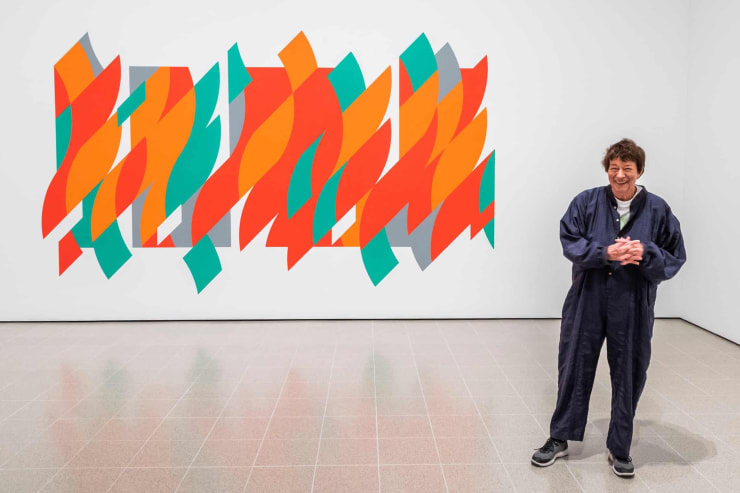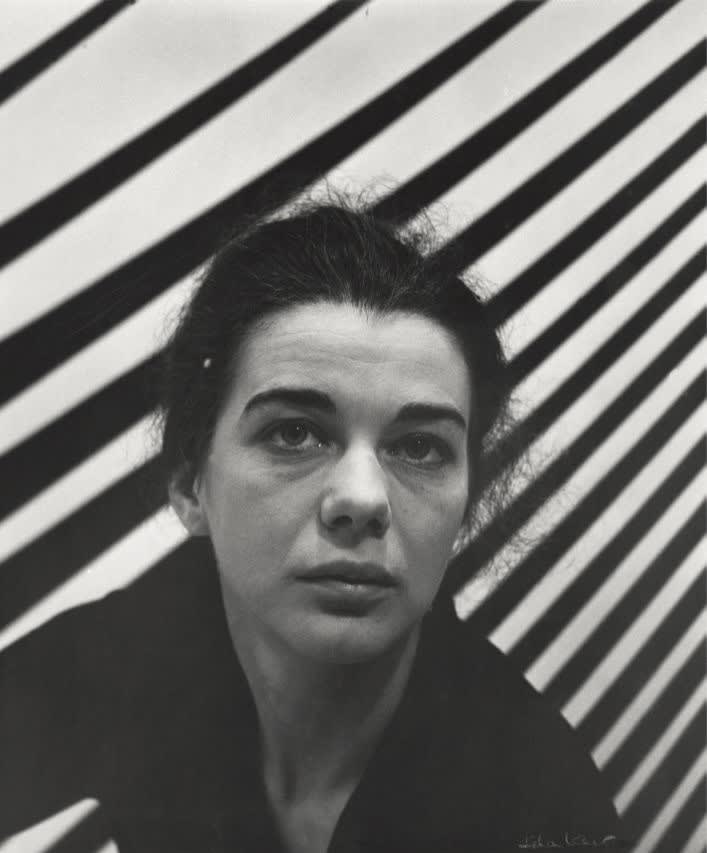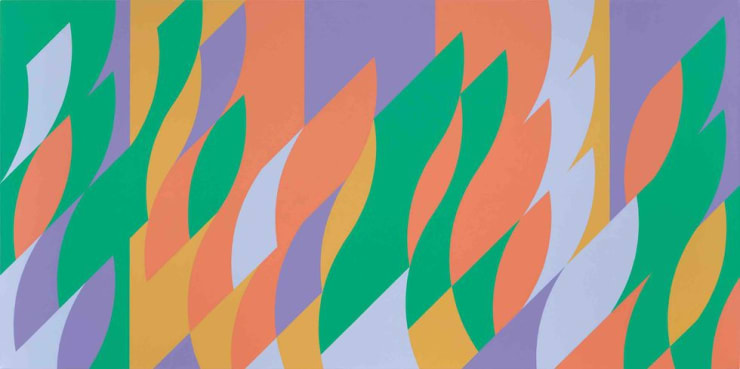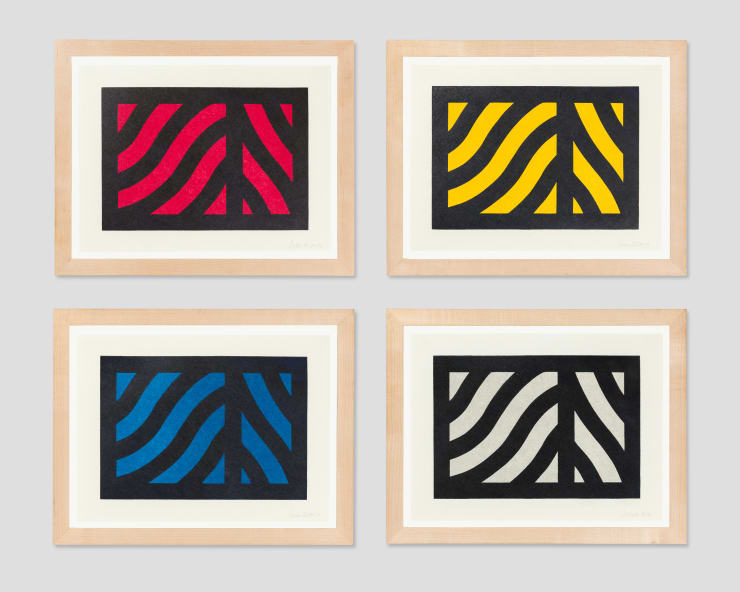Bridget Riley
Bridget Riley (b. 1931, England) is famous for her contributions to the development of Op Art alongside artists Victor Vasarley and Richard Anuszkiewicz. In the early 1960s, Riley’s mesmerizing black-and-white paintings and prints gained notoriety. Later that decade, the artist became fascinated with color theory and introduced bright colors into her compositions. Inspired by Pointillist artist Georges Seurat, Riley’s patterns include distinct gradients and variations in tone. “The eye can travel over the surface in a way parallel to the way it moves over nature. It should feel caressed and soothed, experience frictions and ruptures, glide and drift,” she once said of her work. “One moment, there will be nothing to look at and the next second the canvas seems to refill, to be crowded with visual events.”
Riley studied at Cheltenham Ladies’ College, Goldsmiths College and the Royal College of Art. In 1968 she received an International Painting Prize at the Venice Biennale and was then named a Commander of the Most Excellent Order of the British Empire in 1974. In 2021, the Yale Center for British Art hosted the artist’s first retrospective in the United States. Riley’s compositions are collected by prestigious institutions, including the Museum of Modern Art (New York), National Gallery of Art (Washington, D.C.), Tate Gallery (London) and the Peggy Guggenheim Collection (Venice).
related works
- In our sister gallery, form & concept, Brett Kern similarly plays with illusion by creating an inflatable plastic effect out of his immutable porcelain designs. View his work.
-
Conceptual artist Sol LeWitt was a pioneer of radical aesthetics. Using simple lines as building blocks, he created a vast oeuvre of complex patterns and vivid colors. View his work.
-
Noted "Wizard of Op" Richard Anuszkiewicz similarly uses bright, geometric forms to play with the optical experience of viewing art. View his work.
-

What does a Bridget Riley painting sound like?
Richard Fairman, Financial Times, December 6, 2019 -

Bridget Riley’s Movement in Squares: an anxiety-inducing illusion
Skye Sherwin, The Guardian, December 6, 2019 -

Bridget Riley–still finding new ways to dazzle and exhilarate
Laura Cumming, The Guardian, November 2, 2019 -

Bridget Riley’s Paintings Continue to Mesmerize, Six Decades On
Alina Cohen, Artsy, November 1, 2019 -

A major Bridget Riley retrospective comes to London
Meg Honigmann, Harper's Bazaar, October 2, 2019
-

Spectrum
Spring Print & Ceramics Showcase 9 Apr - 28 May 2021Collections collide in this exhibition featuring selections from Zane Bennett Contemporary Art and our sister gallery, form & concept . The display of prints and ceramics is co-curated by Director...Read more -

Women in Print
25 Sep - 23 Dec 2020Women in Print tells the often-overlooked story of female-founded print workshops, which kickstarted an American printmaking renaissance in the 1960s in 1970s that continues today. Prior to the 1960s, printmaking...Read more -

Chromo
Annual Winter/Spring Print Show 31 Jan - 4 Jul 2020El Anatsui, Mel Bochner, Helen Frankenthaler, Sam Gilliam, Sol LeWitt, Mark Mulroney, Bruce Nauman, Louise Nevelson, Mimmo Paladino, Hayal Pozanti, Robert Rauschenberg, Bridget Riley, Ed Ruscha, Jonas Wood at Zane Bennett Contemporary ArtRead more -

Under the Influence
31 May - 13 Jul 2019“Prints are having a revival,” says curator Kylee Aragon. “And the conversation is shifting. It’s not just a piece of paper—it’s fine art.” This May, Zane Bennett presents Under the...Read more
-

Spectrum Series, Pt. 1
Introduction April 9, 2021Read an introduction to Spectrum, a cross-disciplinary exhibition of prints and ceramics presented by Zane Bennett Contemporary Art and Form & Concept Gallery. Gallery Director Jordan Eddy and Print Curator Kylee Aragon Wallis discuss the show and its themes.Read more -

Top Picks | Women's History Month
March 5, 2021'If you ask someone walking past you on the street or even in an art gallery to name five male artists, the response will be...Read more









